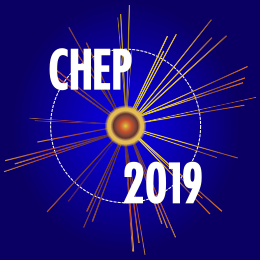Speaker
Description
The future upgraded High Luminosity LHC (HL-LHC) is expected to deliver about 5 times higher instantaneous luminosity than the present LHC, producing pile-up up to 200 interactions per bunch crossing. As a part of its phase-II upgrade program, the CMS collaboration is developing a new end-cap calorimeter system, the High Granularity Calorimeter (HGCAL), featuring highly-segmented hexagonal silicon sensors (0.5-1.1 cm2) and scintillators (4-30 cm2), totalling more than 6 million channels in comparison to about 200k channels for the present CMS endcap calorimeters. For each event, the HGCAL clustering algorithm needs to reduce more than 100k hits into ~10k clusters, while keeping the fine shower structure. The same algorithm must reject pileup for further shower reconstruction. Due to the high pileup in the HL-LHC and high granularity, HGCAL clustering is confronted with an unprecedented surge of computation load. This motivates the concept of high-throughput heterogeneous computing in HGCAL offline clustering. Here we introduce a fully-parallelizable density-based clustering algorithm running on GPUs. It uses a tile-based data structure as input for a fast query of neighbouring cells and achieves an O(n) computational complexity. Within the CMS reconstruction framework, clustering on GPUs demonstrates at least a 10x throughout increase compared to current CPU-based clustering.
| Consider for promotion | Yes |
|---|
